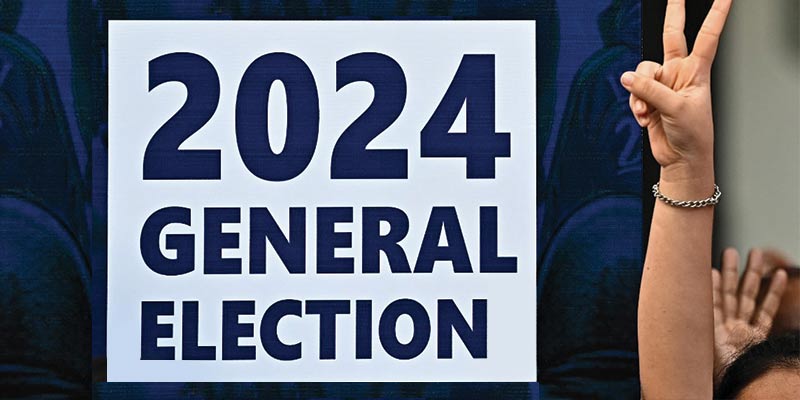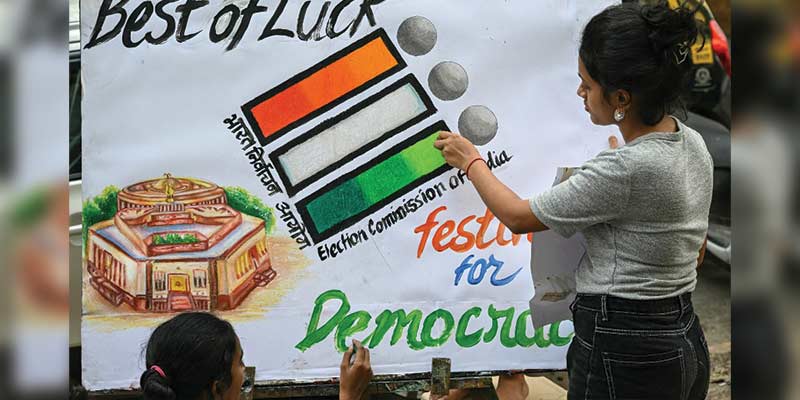- India
- Mar 18
Explainer - History of Model Code of Conduct
• The Model Code of Conduct (MCC) came into force on March 16 with the announcement of Lok Sabha polls by Chief Election Commissioner Rajiv Kumar.
• Polling for the 543 Lok Sabha seats will be held in seven phases, starting with 102 in the first phase on April 19. The votes will be counted on June 4.
• Rajiv Kumar also advised the political parties against hate speeches, caste or religious appeals, criticism of any aspect of private life, masquerading of advertisements as news and social media posts vilifying or insulting rivals.
What is Model Code of Conduct?
• The Model Code of Conduct for guidance of political parties and candidates is a set of norms which has been evolved with the consensus of political parties who have consented to abide by the principles embodied in the said code and also binds them to respect and observe it in its letter and spirit.
• Its objective is to keep the campaigning, polling and the counting process orderly, clean and peaceful and check any abuse of state machinery and finances by the party in power.
• The code guides how political parties, contesting candidates and parties in power should conduct themselves during the process of elections. It includes their general conduct during electioneering, holding meetings and processions, poll day activities and functioning of the party in power, etc.
• Model Code of Conduct is not a statutory document.
• Though the Model Code of Conduct does not have legal sanctity, several of its provisions have enabling laws contained in the Indian Penal Code and the Representation of the People Act, 1951.
• The MCC comes into force as soon as the EC announces the poll schedule and remains operational until the process is concluded.
• The Election Commission is fully authorised to investigate any violation of the code and pronounce punishment.
What is the applicability of MCC?
• During general elections to the House of People (Lok Sabha), the MCC is applicable throughout the country.
• During general elections to the Legislative Assembly (Vidhan Sabha), the MCC is applicable in the entire state.
• During by-elections, in case the constituency is situated in state capital/metropolitan cities/municipal corporations, then the code would be applicable in the area of concerned Constituency only. In all other cases the MCC would be enforced in the entire district covering the constituency going for bypoll.
Origin of MCC
• Kerala adopted, for the first time, a code of conduct for observance for political parties during the general election to the State Legislative Assembly in February 1960. A draft code was voluntarily approved by the representatives of the leading political parties of the state at a meeting specially convened for the purpose by the state government. This code covered, in detail, important aspects of electioneering, like meetings and processions, speeches and slogans, posters and placards.
• During General Elections to Lok Sabha and simultaneous elections to several state Assemblies in 1962, the Election Commission circulated that Code to all the recognised political parties and it proved to be effective in conducting election campaigns in a peaceful and orderly atmosphere in the country. The political parties, by and large, followed the Code.
• During mid-term elections in several states in 1968 and 1969, the Election Commission prepared a document on minimum standard of conduct and behaviour, entitled ‘Role and Responsibilities of Political Parties during Elections: An Appeal to Political Parties for the Observance of a Minimum Code of Conduct during Election Propaganda and Campaign’ and placed the same before the political parties in the meetings held in each state.
• The Election Commission reiterated similar appeals to the political parties at the time of the next round of general elections to the House of the People and certain state Legislative Assemblies in 1971-72.
• On September 12, 1979, the Election Commission convened a conference of political parties to discuss a more comprehensive Model Code of Conduct to bring within its purview the role of ruling parties, so that they could not misuse their official position for the furtherance of their prospects at the hustings. The representatives of the political parties attending the meeting supported the idea to revise Model Codes so as to incorporate suitable provisions for restricting the government party. Accordingly, on the eve of the general election to the House of the People in October 1979, the Election Commission issued a thoroughly revised Model Code making it much more comprehensive.
• The 1991 General Election was a watershed event in the course of evolution of Model Code. That year, Model Code was further amplified and re-issued. From this election, the Election Commission became more pro-active to ensure the observance of Model Code.
• Model Code of Conduct has come a long way since its inception in the 1960s. From a passive document, it has evolved into an effective and powerful tool in the hands of the Election Commission. Now, not only the political parties and contesting candidates but the public servants have also been brought in the ambit of Model Code.
• The Election Commission has become more and more assertive to ensure observance of Model Code of Conduct in its true letter and spirit by all the stakeholders. The judiciary has recognised the fact that the Election Commission is well entitled to take necessary steps as per the provision of Model Code to ensure conduct of a free and fair election.
Parts of Model Code of Conduct
Model Code of Conduct contains eight parts:
• Part I of Model Code lays stress on certain minimum standards of good behaviour and conduct of political parties, candidates and their workers and supporters during the election campaigns.
• Parts II and III deal with the holding of public meetings and taking out processions by political parties and candidates.
• Parts IV and V describe how political parties and candidates should conduct themselves on the polling day and at the polling booths.
• Part VI exhorts political parties and candidates to bring their complaints to the notice of the observers appointed by the Election Commission for remedial action.
• Part VII deals with the parties in power. This part deals with several issues relating to the government and its ministers, such as visits of ministers, use of government transport and government accommodation, announcements of various schemes and projects, etc.
• The Part VIII says that election manifestos shall not contain anything repugnant to the ideals and principles enshrined in the Constitution and further that it shall be consistent with the letter and spirit of other provisions of Model Code.
Manorama Yearbook app is now available on Google Play Store and iOS App Store


